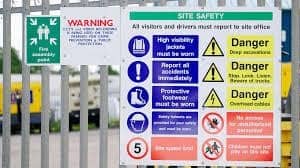The conveyancing process can seem complicated and frustrating for both buyers and sellers; however, by garnering an understanding of the procedures and the order in which they take place, both parties can approach the transaction with confidence.
You can find easy to understand conveyancing news and information by searching online. Whether you are buying or selling a property, you will discover plenty of information on sites such as https://www.samconveyancing.co.uk/news/conveyancing that will keep you up to date with recent legal developments, the issues you are likely to face, useful tips, and more.
Housing market moving in the right direction
Net mortgage approvals for property purchases rose by 3,700 in January 2024 compared to the previous month to a total of 55,200, indicating that the market is moving in the right direction.. If you are one of the people looking to enter the market, you may want to know more about the conveyancing process.
Typical conveyancing process
If you are a vendor, you will instruct a conveyancer and they will reply with a letter setting out the terms and conditions and fees involved. The conveyancer will then conduct identity checks and send out a fittings and contents form along with a property information form to be completed. Leasehold properties may need other documentation.
Your conveyancer will obtain the title deeds or copies of the title register and details of any outstanding mortgage on the property. They will prepare a draft contract and send it with supporting papers to the buyer’s representative.
The buyer’s conveyancer will examine the contract and raise pre-contract enquiries with your conveyancer, who will reply to these enquiries. If the buyer’s representative is satisfied with the answers and has acceptable results from their searches, they will confirm this and confirm that the buyer is in receipt of a mortgage offer if one is required.
The parties will agree on a completion date, contracts will be exchanged, and a deposit will be paid by the buyer. Your conveyancer will calculate a settlement figure for any outstanding mortgage, while the buyer’s conveyancer drafts and sends a transfer deed to be checked and signed by you.
On completion, you must vacate the property and hand over the keys. The buyer’s conveyancer sends the proceeds to your conveyancer and the keys will be released. Your conveyancer now sends the title deeds and transfer deeds to the other side together with an undertaking to use the sale proceeds to clear any existing mortgage.
Further costs, such as estate agent fees and conveyancing costs, will be deducted. After this, the remaining proceeds of the sale will be transferred to your bank account.





